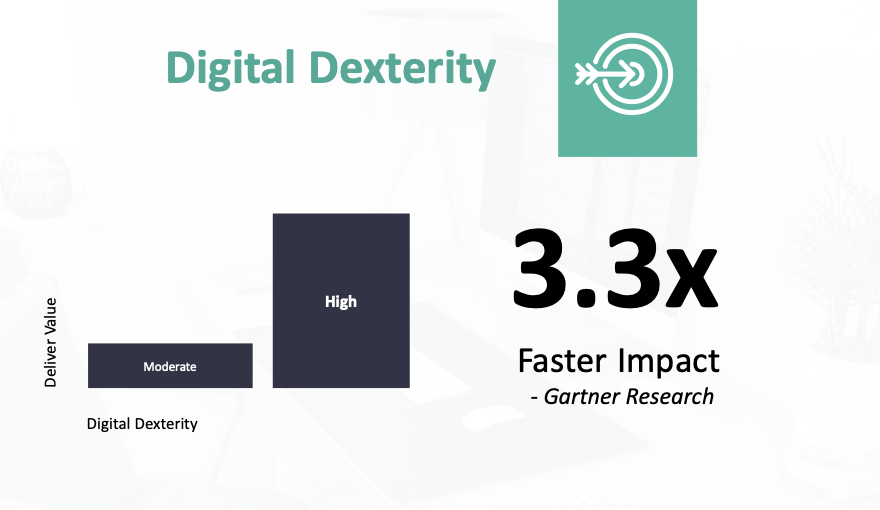Digital Dexterity is the capability in an organization with the ability to deliver transformational business impact. As organizations invest trillions of dollars into digital transformation initiatives, it is quite normal to not realize the desired impact in over 70% of the projects. A problem that is regularly attributed to the lack of skills. Irrespective of the sources, challenges, or limitations of transformative efforts; research from Gartner suggests Digital Dexterity as one of the ways to realize results faster.
Digital Dexterity comes from Skills available in the organization or built as a part of the transformation initiatives. Over the past few weeks, we were looking for a framework to simplify skill-building by leveraging technology to help. This was not an easy endeavor with several variations, deviations and opinions making actionability a challenge.
Skill is the knowledge to perform action/s with determined results.
Acquiring skills is just a matter of focus on three elements Knowledge, Action performance and deterministic Results. When we say technology to build skill, we therefore can focus on just these three functions or levers.
 Knowledge
Knowledge
In the digital workplace and modern workplace, knowledge is distributed. Civilization today consists of inherent knowledge with relevance built into the design of all aspects of our work and life. As Don Norman writes in The Design of Everyday Things, “..knowledge exists in the users head (familiar) and in the users world (deducible) ..” From understanding the implications of a button to the intuitive application of effort, our world includes knowledge in the most usable form.
In this context, one way to improve the skill is to increase the knowledge in the user’s head or in the world. Knowledge in the head is subject to decay following the forgetting curves- unless imbibed in rituals or behaviors. The Digital Universe provides a fertile ground to enhance the knowledge in the world-where the user can easily deduce the actions to be performed- given the results are obvious. Improving the overall knowledge of users automatically improves the skills-a role that technology can easily play today.
Actions
Digital technology, has simplified actions to the most elementary essences. Touch, press, drag, let-go along a dynamically changing two-dimensional canvas that provides audio-visual or tactile feedback. Skill therefore relies on mappings designed to reduce cognitive load and reduce errors in the interest of simplifying the path to the result.
Although the steps needed to accomplish the results may be larger, modern UX design relies on simple actions to attain obvious results in a repeatable form. The skills problem therefore, turns into mastering the sequence of actions problem. In addition to the next step decision, automation plays a role in building skills in the digital workplace. All UX designers have to focus on is provide cues and nudges towards desired results. The skills problem for action therefore reduces to identifying the cues and making decisions faster or recovering from errors quickly.
Results
“Assume all errors that can be made, will be made” cautions Don Norman while providing the seven principles of a good UX. Although, this seems like a manageable problem, in the universe where simple actions, are arranged in innumerable ways to accomplish results; over time- complexity introduces new errors leaving users struggling to reach expected results. The paths of recovery therefore multiply significantly over time.
While technologies can help automatically enhance the skills of the digital population, over time, it becomes the hurdle getting in the way of competence. Most of the hurdles are removed over time through standardization and training but the costs to users and buyers is quite large when new services are introduced rapidly-with an intent to enhance productivity, improve outcomes and simplify execution.
Challenges to Skill-building
Simple focus on these three elements does not guarantee successful productivity enhancements for the digital workforce. Constant innovation, improvements and changes leaves the room for development, distribution and embedding of the three levers inside all digital experiences. Let us look at the most common challenges users face in operating skills in the digital world.
Knowledge: Supplementing the knowledge of using software with features available in modern work-benches is not a straight-forward process. Feature names, operations, placements, designs and customizations by organizations raise the four following challenges.
- What: What does this feature do?
- Where: Where does a user find the starting point for a required result?
- Why: Why does a process place requirements and constraints that hinder progress?
- How: How does the present set of tasks lead to the desired outcome.
Overcoming these challenges in the past was a matter of training, similar processes and narrow specializations. With the widening range of activities, these challenges lead to higher support costs, lengthy trainings and long search overhead.
Actions: Given that actions have been reduced to the most elemental form, dynamic visual cues are the foundational elements of all activities. While several innovations stay the same, new innovations constantly surface the four challenges in actions powering skillful execution.
- Start: Locate the start of an action that is new, improved or infrequently used.

- Next: Given a location in the workflow, how does a decision translate to choose between the next immediate actions?
- Recovery: In a multi-step dynamically evolving workflow, how do you rollback to the right point to correct the outcome?
- New: Given the rapid pace of innovation, how does the new flow follow or differ from the older method?
Results: Even with the best UX, training and intelligence inherent in the current digital workforce, constantly evolving requirements obfuscate the desired results regularly. This raises the challenges along the three dimensions
- Maps: Certainty of the desired result given the imperfect data in the real world.
- Constraints: Confidence in the successful completion of the workflow given the limitations and constraints placed in real-time.
- Decisions: Difficulty of making decisions with nuances that are not obvious or contain considerable overlap.
Digital Dexterity therefore requires solving for all the three types of challenges at the time of transformation and over the lifecycle of operations. The weight of each of these pillars evolves as time passes, experience is gained, markets evolve, innovation diffuses and demands on individuals change. Enabling technologies no longer mean providing the tools to get the job done; but require training, guidance, support and constant evaluation over the lifecycle of the digital workbench.

The potential returns of incorporating digital dexterity are clear across 100s of customers leveraging MyGuide as a digital adoption platform that has been quantified time and again over the past year. In addition to speeding up the time to impact, organizations see training times drop, training effectiveness improve, user productivity improve and support costs go down.
Talk to us
We can bring learnings from across industries to help you imbibe digital dexterity within your organization in the flow of work. Rollout new applications, processes or organization with ease and speed up impact across the board. Watch the webinar on demand where we share our experiences and key learnings from our customers.
[advanced_iframe src=”https://player.vimeo.com/video/558933102″ width=”100%” height =”300″]


